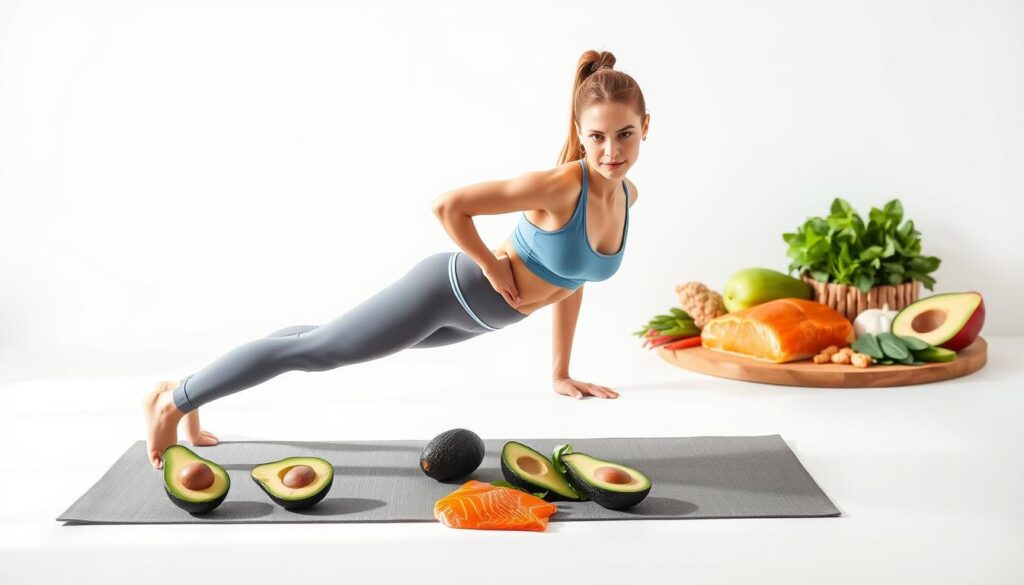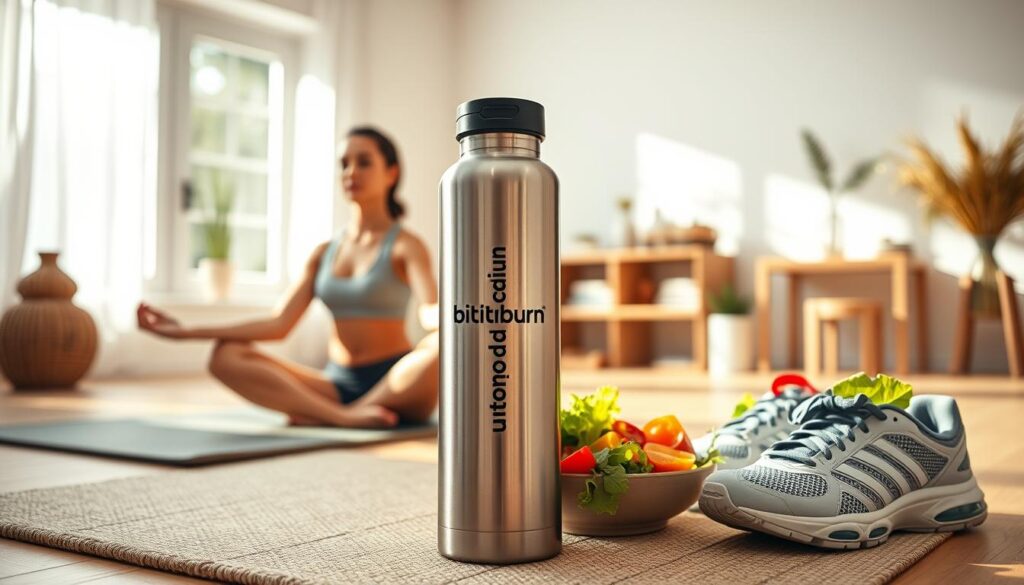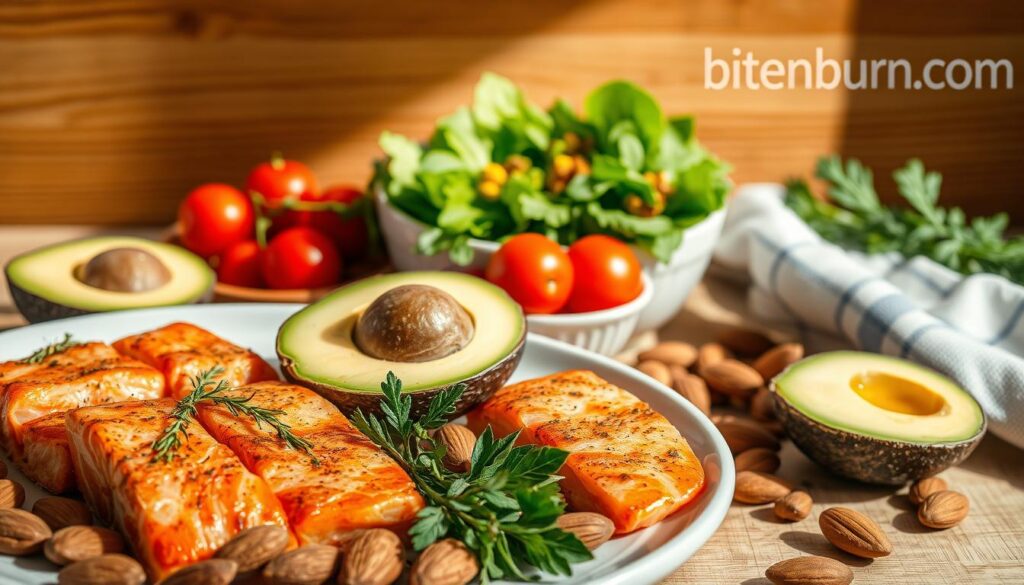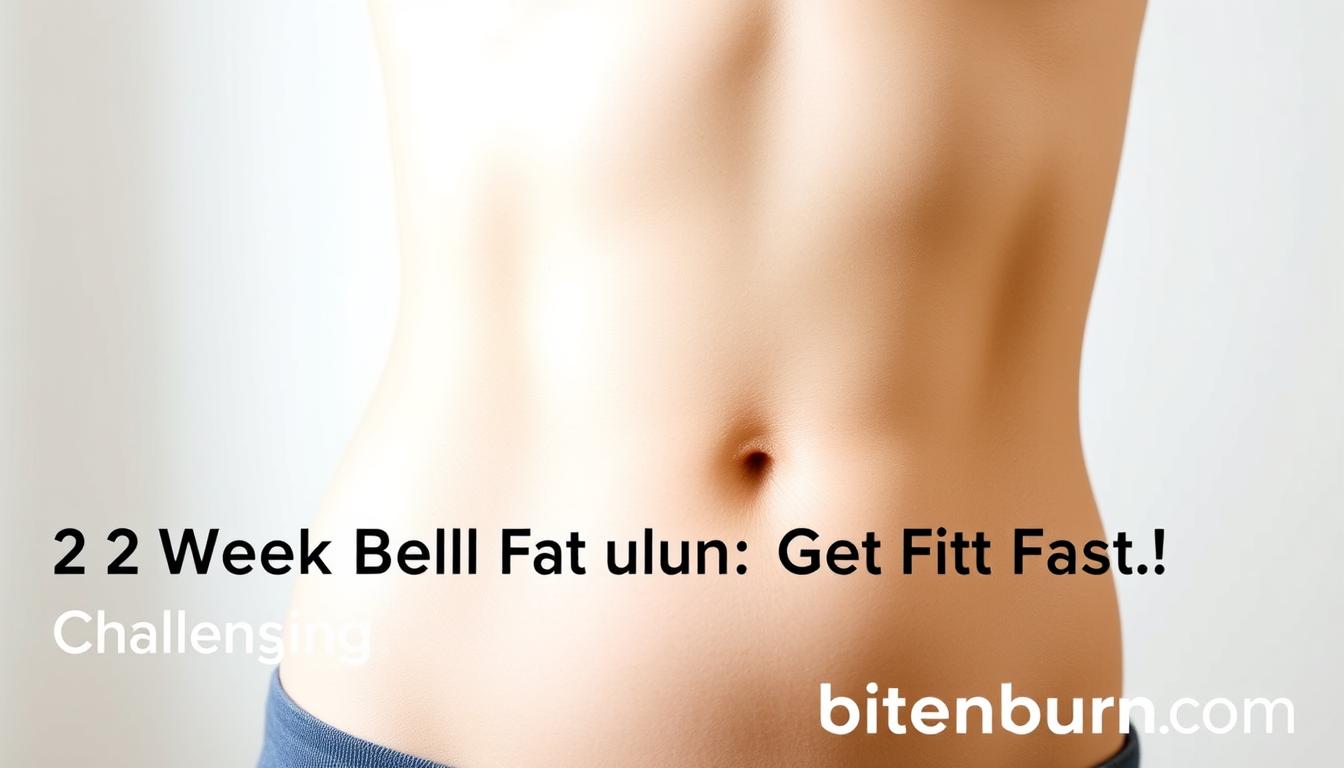Ever wondered if it’s possible to see noticeable changes in your body in just a short time? The answer is yes! With the right plan, you can kickstart your fitness journey and feel more confident in just two weeks. This challenge is designed to help you shed stubborn areas while improving your overall health.
While spot reduction isn’t scientifically proven, a well-rounded approach can lead to significant results. Experts like Chris Gagliardi emphasize combining exercise with proper nutrition for effective weight loss. Staying active and making smart food choices are key to burning calories and managing your weight.
This challenge isn’t just about losing fat—it’s about boosting your energy, improving your mood, and creating habits that last. Ready to take the first step? Let’s dive in and make the next two weeks count!
Key Takeaways
- A holistic approach is essential for effective weight loss.
- Combining exercise and nutrition yields the best results.
- Spot reduction isn’t possible, but overall fat loss is achievable.
- Short-term challenges can kickstart long-term habits.
- Expert guidance ensures a safe and effective plan.
Understanding Belly Fat and Its Health Implications
Abdominal fat isn’t just a cosmetic concern—it’s a health risk worth addressing. While many focus on its appearance, the real issue lies beneath the surface. There are two main types of fat in this area: subcutaneous fat, which lies just under the skin, and visceral fat, which surrounds your internal organs. Visceral fat is particularly dangerous because it’s linked to serious health conditions.
Why Belly Fat is a Health Concern
Numerous studies have shown that high levels of visceral fat increase the risk of cardiovascular disease, type 2 diabetes, and even certain cancers. This type of fat is metabolically active, meaning it releases hormones and chemicals that can cause inflammation and insulin resistance. Over time, these effects can damage your organs and impair your overall health.
Here’s a quick comparison of the two types of fat:
| Type of Fat | Location | Health Impact |
|---|---|---|
| Subcutaneous Fat | Under the skin | Less harmful, primarily cosmetic |
| Visceral Fat | Around internal organs | Linked to serious health risks |
The Role of Genetics and Lifestyle Factors
Genetics can influence where your body stores fat, but lifestyle choices play a significant role. Poor diet, lack of exercise, and high stress levels can all contribute to increased visceral fat. The good news? Positive changes in diet and activity levels can help reduce this fat over time, even if you’re genetically predisposed to store it in your midsection.
Understanding these factors is the first step toward making healthier choices. By focusing on reducing visceral fat, you’re not just improving your appearance—you’re safeguarding your long-term health.
Proven Ways to Burn Belly Fat in 2 Weeks

Transforming your body in a short period requires a strategic and balanced approach. It’s not just about quick fixes but creating sustainable habits that lead to long-term success. By focusing on daily routines and structured plans, you can achieve noticeable results.
Adopting a Comprehensive Approach
Effective weight loss involves a combination of better habits and consistent effort. Every day counts, and even small changes can add up over time. Start by incorporating activities like brisk walking or HIIT into your routine. These exercises are great for boosting metabolism and supporting overall body fat reduction.
Nutrition plays a crucial role too. Tracking your calorie intake helps you stay on track and make informed choices. Pair this with a balanced diet rich in whole foods, and you’ll see progress faster. Remember, it’s not just about spot exercises—focus on a holistic plan for the best results.
| Strategy | Benefit |
|---|---|
| Daily Exercise | Boosts metabolism and burns calories |
| Calorie Tracking | Helps maintain a healthy deficit |
| Balanced Nutrition | Supports overall health and fat loss |
Consistency is key. Whether it’s a 20-minute workout or a mindful meal, every effort contributes to your goals. By adopting these proven methods, you’ll not only see changes in your body but also feel more energized and confident.
Kickstart Your Nutrition for a Trim Tummy
Nutrition plays a pivotal role in achieving a healthier body composition. A well-planned, nutrient-dense diet is the foundation of any successful health journey. By focusing on the right types of foods, you can curb hunger, stabilize blood sugar, and support your goals effectively.
Fiber, Protein, and Healthy Carbs
Foods rich in fiber, protein, and healthy carbohydrates are essential for managing your weight. Fiber keeps you full longer, while protein supports muscle repair and growth. Healthy carbs provide sustained energy without spiking blood sugar levels.
Include whole grains, legumes, fruits, and vegetables in your daily meals. These foods are packed with nutrients and help you stay on track. Tracking your intake ensures you’re meeting your nutritional needs without overeating.
Smart Swaps to Reduce Calorie Intake
Making small changes to your diet can lead to big results. Swap processed snacks for fresh fruits or nuts. Choose whole-grain bread instead of white bread. These simple adjustments reduce calorie intake while keeping meals satisfying.
Here’s a quick comparison of whole foods vs. processed foods:
| Whole Foods | Processed Foods |
|---|---|
| Brown rice | White rice |
| Fresh vegetables | Canned vegetables with added salt |
| Grilled chicken | Fried chicken |
By choosing whole foods, you’re not only cutting calories but also improving your overall health. These swaps are easy to implement and make a significant difference over time.
Effective Exercise Routines for Rapid Fat Loss

Effective workouts can transform your body and boost your confidence in just a short time. To achieve noticeable results, it’s essential to combine different types of exercises that target both calorie burn and muscle development. Experts like Chris DiVecchio and Dr. Cheskin recommend a mix of HIIT, cardio, and strength training for optimal results.
Incorporating HIIT and Cardio
High-Intensity Interval Training (HIIT) and cardio are excellent for boosting heart health and burning calories quickly. These workouts involve short bursts of intense activity followed by brief rest periods. For example, a 20-minute HIIT session can burn more calories than a steady-paced jog.
Here are some practical tips to incorporate HIIT and cardio into your routine:
- Start with 2-3 sessions per week to build stamina.
- Choose activities you enjoy, like cycling, running, or dancing.
- Gradually increase the intensity as your fitness improves.
Strength Training Strategies
Strength training is crucial for building muscle and increasing your metabolic rate. When you develop more muscle, your body burns more calories per day, even at rest. Incorporate exercises like squats, lunges, and weightlifting into your weekly plan.
Here’s a comparison of different strength training benefits:
| Exercise | Primary Benefit |
|---|---|
| Squats | Targets lower body muscles |
| Push-ups | Strengthens upper body and core |
| Deadlifts | Builds overall muscle mass |
By combining HIIT, cardio, and strength training, you can create a balanced routine that helps you lose weight and build muscle. Consistency is key—schedule your workouts weekly to maintain momentum and see visible results.
Lifestyle Tweaks to Supercharge Your Transformation

Small changes in your daily routine can lead to big transformations over time. By making simple adjustments to your lifestyle, you can boost your energy, improve your mood, and support your fitness goals. These tweaks don’t require drastic measures—just consistent effort and a focus on gradual change.
One of the most impactful tips is improving your sleep habits. Quality sleep helps regulate hormones that control hunger and energy levels. Aim for 7-9 hours of restful sleep each night to support your body’s recovery and overall health.
Managing stress is another key factor. High stress can lead to unhealthy habits and weight gain. Try incorporating relaxation techniques like deep breathing, meditation, or yoga into your daily routine. These practices not only reduce stress but also enhance your mental and physical well-being.
Here are some easy-to-implement lifestyle changes:
- Take short walks during breaks to increase activity levels.
- Swap sugary drinks for water or herbal tea to reduce calorie intake.
- Plan meals ahead to avoid unhealthy last-minute choices.
The benefit of these changes goes beyond physical appearance. They improve your energy levels, support long-term weight maintenance, and contribute to a healthier, happier you. Remember, even small steps can lead to significant results when compounded over time.
By focusing on gradual change, you’re not just transforming your body—you’re building a sustainable, healthier lifestyle. Start with one tip today and watch how it positively impacts your journey.
Smart Meal Planning and Delicious Home Cooking

Cooking at home can be a game-changer for your health and budget. By planning your meals ahead of time, you save money, reduce food waste, and ensure you’re eating nutritious, balanced meals. It’s a simple habit that can make a big difference in your daily life.
Portion control is another key benefit of meal planning. When you prepare your meals in advance, you’re less likely to overeat or grab unhealthy snacks. This approach helps you stay on track with your goals while enjoying delicious, home-cooked food.
Easy Recipes and Portion Control
Start with simple recipes that are quick to prepare and packed with nutrients. For breakfast, try a veggie-packed omelet with a side of fresh fruit. Eggs are a great source of protein, while fruits add natural sweetness and essential vitamins.
For lunch or dinner, consider grilled fish with a side of steamed vegetables. Fish like salmon or cod are rich in omega-3 fatty acids, which support heart health. Pair it with a colorful salad or roasted veggies for a satisfying meal.
Here are some easy recipe ideas to get you started:
- Scrambled eggs with spinach and avocado.
- Grilled salmon with quinoa and roasted asparagus.
- Fruit and yogurt parfait with granola for a healthy snack.
Balancing macronutrients is essential for maintaining energy throughout the day. Aim to include a mix of protein, healthy fats, and complex carbs in every meal. For example, pair grilled chicken with brown rice and a side of steamed broccoli.
Preparing home-cooked meals allows you to control the quality of ingredients and avoid hidden additives. It’s also a great way to experiment with new flavors and enjoy the process of cooking. Over time, these habits can lead to better health and a more enjoyable relationship with food.
Managing Stress and Enhancing Sleep for Better Results

Achieving your fitness goals isn’t just about exercise and diet—it’s also about managing stress and improving sleep. Research shows that quality sleep and stress management play a crucial role in regulating hormones, stabilizing energy levels, and supporting overall health. By focusing on these areas, you can enhance your results and feel better both physically and mentally.
The Role of Sleep in Health and Fitness
Quality sleep is essential for regulating hormones like cortisol and ghrelin, which control appetite and stress. Studies have found that insufficient sleep can lead to increased calorie intake and cravings for sugary foods. Aim for 7-9 hours of restful sleep each night to support your body’s recovery and maintain energy levels.
Poor sleep quality can also negatively affect metabolism and mood. Over time, this can make it harder to stick to your fitness routine. Prioritizing sleep is a simple yet powerful way to improve your overall well-being.
Stress Reduction Techniques
High stress levels can sabotage your efforts by triggering unhealthy habits and weight gain. Incorporating stress-reduction techniques into your daily routine can make a significant difference. Even a few minutes of relaxation each day can help lower cortisol levels and improve your mood.
Here are some effective stress-reduction strategies:
- Practice deep breathing or meditation for 5-10 minutes daily.
- Engage in activities you enjoy, like reading or listening to music.
- Try yoga or stretching to relax your body and mind.
The Impact of Sugar on Energy and Mood
High sugar intake can lead to energy crashes and mood swings, making it harder to stay consistent with your goals. Reducing sugar in your diet helps stabilize energy levels and supports better sleep. Swap sugary snacks for healthier options like fresh fruit or nuts to curb cravings.
Here’s a comparison of the effects of sugar vs. whole foods:
| High Sugar Intake | Whole Foods |
|---|---|
| Causes energy spikes and crashes | Provides sustained energy |
| Increases cravings for unhealthy snacks | Keeps you full longer |
| Negatively affects sleep quality | Supports restful sleep |
By managing stress and improving sleep, you’re not just enhancing your fitness results—you’re also boosting your overall health. Start with small changes today and experience the benefits of a more balanced lifestyle.
The Role of Healthy Fats and Lean Proteins

Balancing your diet with the right nutrients can make a world of difference in your health journey. Healthy fats and lean proteins are essential for maintaining energy, supporting muscle growth, and keeping you satisfied throughout the day. By focusing on these macronutrients, you can optimize your body’s performance and achieve your fitness goals more effectively.
Protein is crucial for muscle repair and growth. Ensuring the right amount of protein in your diet helps your body recover after workouts and build lean muscle mass. Sources like chicken, fish, and plant-based options such as lentils are excellent choices. Including protein in every meal can also help regulate your appetite, making it easier to manage your intake of calories.
Healthy fats, on the other hand, play a vital role in keeping your body satiated. Foods like avocados, nuts, and fatty fish are rich in omega-3 fatty acids, which support heart health and reduce inflammation. Research suggests that incorporating these fats into your diet can help a person naturally reduce abdominal fat over time.
Here’s a quick comparison of healthy vs. unhealthy fats:
| Healthy Fats | Unhealthy Fats |
|---|---|
| Avocado | Fried foods |
| Olive oil | Processed snacks |
| Salmon | Margarine |
Adjusting your intake of these macronutrients can favorably influence your body composition. For example, replacing processed snacks with nutrient-dense alternatives like nuts or seeds can make a significant difference. Small changes in your diet can lead to big results over time.
By focusing on the right source of nutrients, you’re not just improving your appearance—you’re enhancing your overall health. Start by incorporating more lean proteins and healthy fats into your meals today. These simple adjustments can help you feel more energized, satisfied, and confident in your health journey.
Motivational Tips and Real-Life Success Stories
Staying motivated can be the key to unlocking your full potential. Whether you’re just starting or need a boost to keep going, hearing from others who’ve succeeded can fuel your own journey. Let’s explore some inspiring stories and expert insights to help you stay on track.
Expert Insights and Testimonials
Setting clear goals is the first step toward achieving lasting change. According to research, people who define specific, measurable objectives are more likely to succeed. Experts emphasize the importance of tracking progress and celebrating small wins along the way.
Here’s what some successful individuals have shared:
- “I started with small changes, like walking daily, and gradually built up to more intense workouts.” – Sarah, 34
- “Meal planning helped me stay consistent and avoid unhealthy choices.” – Mike, 28
- “Tracking my progress kept me motivated and focused on my goals.” – Emily, 42
These stories highlight the type of progress you can achieve with dedication and the right strategies. By following a structured plan and staying committed, you can transform your habits and see real results.
What Progress Can You Expect?
Everyone’s journey is unique, but research shows that consistent effort leads to measurable improvements. You might notice increased energy, better sleep, or a more positive mindset within the first few weeks. Over time, these changes compound, leading to significant transformations.
Here’s a breakdown of the type of progress you might experience:
| Timeframe | Potential Results |
|---|---|
| 1-2 Weeks | Improved energy levels and mood |
| 3-4 Weeks | Noticeable changes in strength and endurance |
| 6+ Weeks | Sustained weight management and healthier habits |
For more inspiration, visit our page dedicated to success stories. These resources provide detailed accounts of how others achieved their goals and can help you stay motivated throughout your journey.
Remember, every step forward is progress. Stay focused, celebrate your wins, and keep pushing toward your goals. You’ve got this!
Conclusion
Taking control of your health starts with small, consistent steps. This challenge emphasizes a holistic approach, combining balanced nutrition, effective exercise, and lifestyle adjustments. Real, sustainable results come from a concerted effort in these areas.
Remember, progress may seem gradual, but every step counts. Stay positive and persistent, even when the journey feels challenging. There’s a proven way lose extra weight and improve your health with dedication and smart choices.
Commit to long-term improvements and trust the process. With expert guidance and a focus on consistency, you can achieve your goals. Start today and take the first step toward a healthier, more confident you!


[…] exercise and a balanced diet? You’re not alone. Many people face the challenge of stubborn belly fat and bloating. Detox water recipes may offer a […]
[…] you know exercising before breakfast doubles fat burning compared to afternoon workouts? A recent study revealed participants who moved their bodies on an […]
[…] have personally seen the benefits of fat burning exercises that can be done from the comfort of your own home. In this article, we’ll explore 5 simple […]